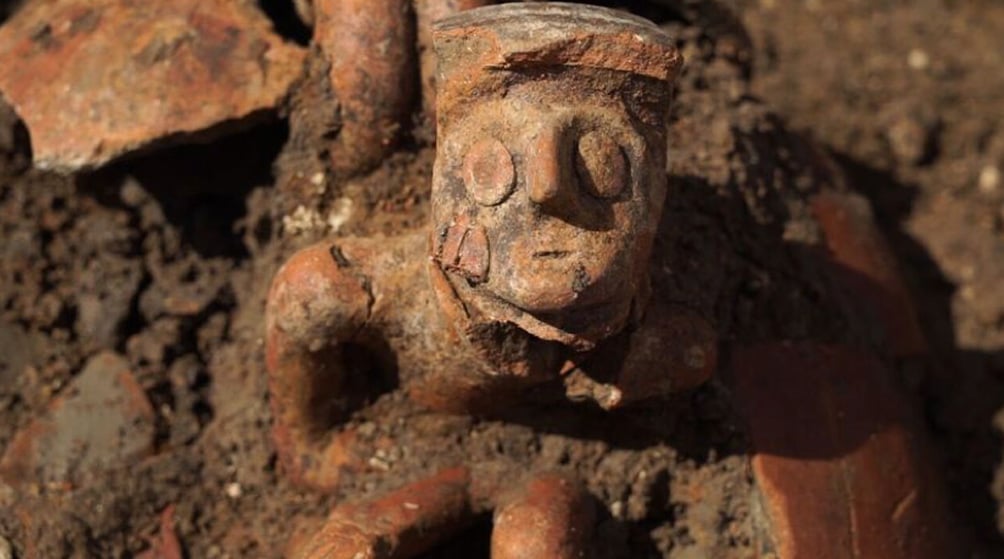3,800-Year-Old Grave Pit Filled with Weapons and ‘Thinking Man’ Found in Israel
A magnificent vessel decorated with a male figure was discovered together with daggers, an axe head and arrowheads that were apparently buried as funerary offerings for one of the respected members of the ancient settlement.
An offering pit containing a treasure of copper weapons and ceramic assemblage has been discovered in Yehuda, a Bronze Age city located in the territory of the Israelite tribe of Dan (Jos 19:40,45), some 13 km East of Tel Aviv-Yafo.

The excavation area. Photographic credit: EYECON Productions, courtesy of the Israel Antiquities Authority.
Among the discoveries are prestige items in excellent condition that the archaeologists believe belonged to the chieftain of the city. Bronze daggers, arrowheads, the head of an axe and a highly decorated drinking cup were found inside the offering pit, along with dozens of ceramic jars, pots and vessels.
The discovery was made by the Israel Antiquities Authority, prior to the construction of a residential building in the modern city that sits atop of the ancient.

Arrowheads that were exposed near the rare pottery vessel. They were probably buried as funerary offerings for a person that was a respected member of the ancient settlement. Photographic credit: Maxim Dinstein, courtesy of the Israel Antiquities Authority.
In addition to the bronzes, other items were found such as pottery vessels, sheep bones and what are very likely the bones of a donkey. An extraordinary jug from the Middle Bronze Age (2200-1550 BCE) set apart from the ceramic assemblages was found in the funerary deposit.
What set the 4,000 year old vessel out is it ´s unique 18 cm high sculpture of a man that sits atop the jar.
“It seems that at first the jug, which is typical of the period, was prepared, and afterwards the unique sculpture was added, the likes of which have never before been discovered in previous research,” said Itach.

The complete rare jug after being restored in the laboratories of the Israel Antiquities Authority. Photographic credit: Clara Amit.
The neck of the jug served as a base for forming the upper portion of the figure, after which the arms, legs and a face were added to the sculpture. One can see that the face of the figure seems to be resting on its hand as if in a state of reflection. Itach added, “It is unclear if the figure was made by the potter who prepared the jug or by another craftsman”.
They finds may hint at the establishment of a 'code' of power: the bronze weapons and the ceremonial vessel are connected with the idea of a military leader, while the unique ceremonial vessel, which stands out from the others in terms of shape, décor and its figure atop, is possibly related to feasting with this ruler in the city.

The 3,800-year-old jug when it was exposed in the field. Photographic credit: EYECON Productions, courtesy of the Israel Antiquities Authority.
“It seems that these objects are funerary offerings that were buried in honor of an important member of the ancient community. It was customary in antiquity to believe that the objects that were interred alongside the individual continued with him into the next world,” said Giliad Itach, head of the excavations in an Israel Antiquities Authority press release.
In addition, a variety of evidence regarding the kind of life that existed there 6,000 years ago was exposed – among other things, pits and shafts were revealed that contained thousands of fragments of pottery vessels, hundreds of flint and basalt implements, animal bones, and a churn which is a unique vessel that was widely used in the Chalcolithic period for making butter.
Top image: The 3,800-year-old jug when it was exposed in the field. Photographic credit: EYECON Productions, courtesy of the Israel Antiquities Authority.
By Sam Bostrom



















